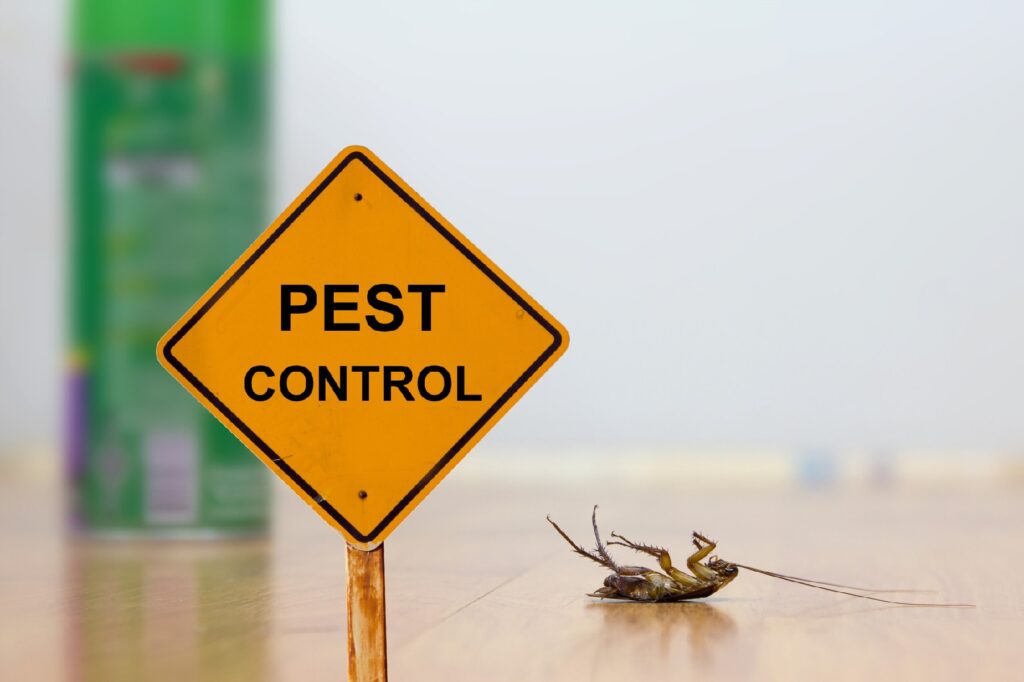Customized Pest Control Solutions Chicago: Tailored Plans for Your Demands
A Comprehensive Guide to the Different Sorts Of Parasite Control Methods
With the myriad of pest control approaches offered, it can be overwhelming to locate the most reliable service for a particular bug problem. In this comprehensive overview, we will certainly check out these various types of bug control methods, providing insights into their applications and advantages. By the end, you will have a more clear understanding of which technique may be the finest fit for your bug control needs.
Chemical Parasite Control Methods

One common type of chemical bug control is insecticides. Pesticides are chemical compounds that are particularly created to eliminate or drive away pests. They can be used in different kinds, such as sprays, baits, or dusts. Pesticides target particular bugs, such as insects, termites, or ants, and can be made use of both indoors and outdoors.
Another type of chemical parasite control is rodenticides. These are chemical substances designed to control populations of rats, such as rats and mice.
Weed killers, additionally referred to as herbicides, are another kind of chemical insect control approach. Herbicides are developed to selectively kill unwanted plants, referred to as weeds, without creating injury to desirable plants. They are commonly utilized in agriculture, landscaping, and horticulture to control the growth of undesirable greenery.
While chemical bug control techniques can be extremely effective in eliminating pests, it is essential to use them deliberately and adhere to security guidelines. Overuse or misuse of chemical pesticides can have unfavorable effect on human health and the setting. It is crucial to use these techniques responsibly and think about alternate insect control techniques whenever possible.
Biological Insect Control Methods
Biological bug control methods include the usage of living organisms or natural substances to take care of and control pest populations. Unlike chemical approaches, which often count on artificial pesticides, biological control approaches use the natural enemies of parasites to regulate their populaces. This approach is considered more eco-friendly and sustainable, as it minimizes using harmful chemicals and minimizes the threat of pesticide resistance.
One extensively used organic insect control approach is the introduction of all-natural predators or parasites. As an example, ladybugs are presented to regulate aphids, while certain wasp species are launched to target caterpillars. These predators and parasites feed on parasites, lowering their numbers and stopping infestations.
One more biological control technique is making use of virus. Specific microorganisms, infections, and fungis can be used to contaminate and eliminate specific parasites. The bacterium Bacillus thuringiensis is generally used to regulate caterpillars, as it generates toxic substances that are deadly to these insects.
Organic control techniques can likewise involve the usage of scents or all-natural compounds that interrupt the breeding patterns of pests. By disrupting their recreation, these approaches help to reduce pest populations over time.
While organic pest control methods are normally reliable, they may require longer periods to accomplish wanted outcomes contrasted to chemical approaches. Additionally, cautious factor to consider must be provided to the choice and launch of natural adversaries to avoid unintentional injury to valuable microorganisms or environments.
Physical Bug Control Techniques
To efficiently take care of and control pest populations, alternative insect control methods called physical parasite control methods are employed. These methods entail making use of physical barriers, catches, or tools to avoid insects from accessing or damaging property. One typical physical insect control approach click here for more is using screens or webs to maintain bugs out of buildings or gardens. These screens are commonly made of fine mesh material that permits for ventilation while avoiding bugs from entering. One more physical insect control technique is the setup of fencings or walls to keep larger bugs, such as deer or bunnies, out of gardens or agricultural fields. These obstacles literally obstruct the parasites' access to the location, reducing the potential for damage. Additionally, traps and devices can be made use of to capture or push back pests. For instance, sticky catches can be positioned in locations where insects are a trouble, and the bugs become stayed with the adhesive surface area. Ultrasonic devices can likewise be made use of to send out high-frequency sounds that are unpleasant to insects, triggering them to leave the area. Physical pest control methods are an eco-friendly choice to chemical pesticides, as they do not count on the usage of harmful chemicals.
All-natural Bug Control Techniques
All-natural parasite control approaches provide a sustainable and eco-friendly technique to handling and eliminating pests. One of the most typical all-natural parasite control methods is biological control. By taking on these all-natural parasite control approaches, people and neighborhoods can effectively manage parasites while reducing the negative impacts on the setting and human health and wellness.
Integrated Pest Management (IPM)
Integrated Insect Monitoring (IPM) is a comprehensive and systematic approach to pest control that incorporates different techniques and techniques to effectively handle parasites while decreasing making use of chemical pesticides. IPM intends to preserve bug populations below the economic injury level by using a combination of social, organic, and chemical control methods.
Social control approaches entail changing the environment to make it less desirable for parasites. This can consist of practices such as plant turning, correct cleanliness, and the use of resistant plant ranges. By creating undesirable problems for parasites, cultural control approaches can substantially decrease insect populaces.

Chemical control techniques are made use of as a last resource in home pesticides IPM. They entail the targeted and judicious use of chemicals to take care of insect populaces. Unlike traditional parasite control methods, IPM aims to decrease making use of chemical pesticides by employing alternate techniques.
Integrated Bug Monitoring (IPM) is a proactive method that concentrates on lasting pest administration instead of depending solely on reactive steps. By integrating multiple control approaches, IPM provides a more lasting and eco-friendly strategy to pest control.
Conclusion
To conclude, this post has supplied a detailed review view it now of the various kinds of parasite control techniques. It discussed chemical, organic, physical, and natural pest control techniques, as well as the integrated parasite management method. By recognizing these various approaches, individuals can make informed choices on which bug control method is most suitable for their details requirements and preferences. Effective insect control is critical in preserving a healthy and pest-free setting.